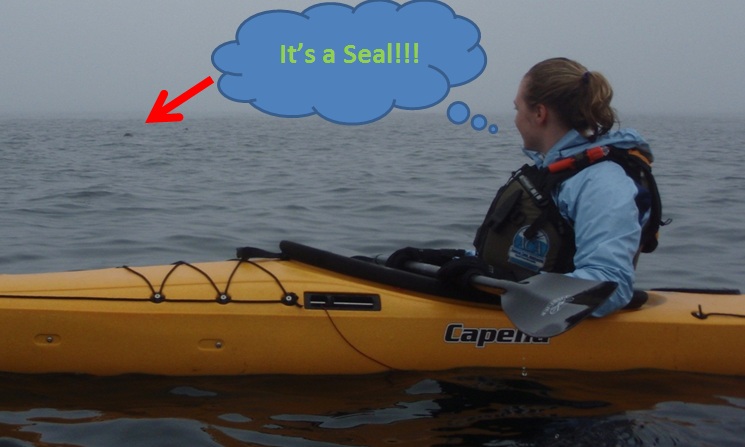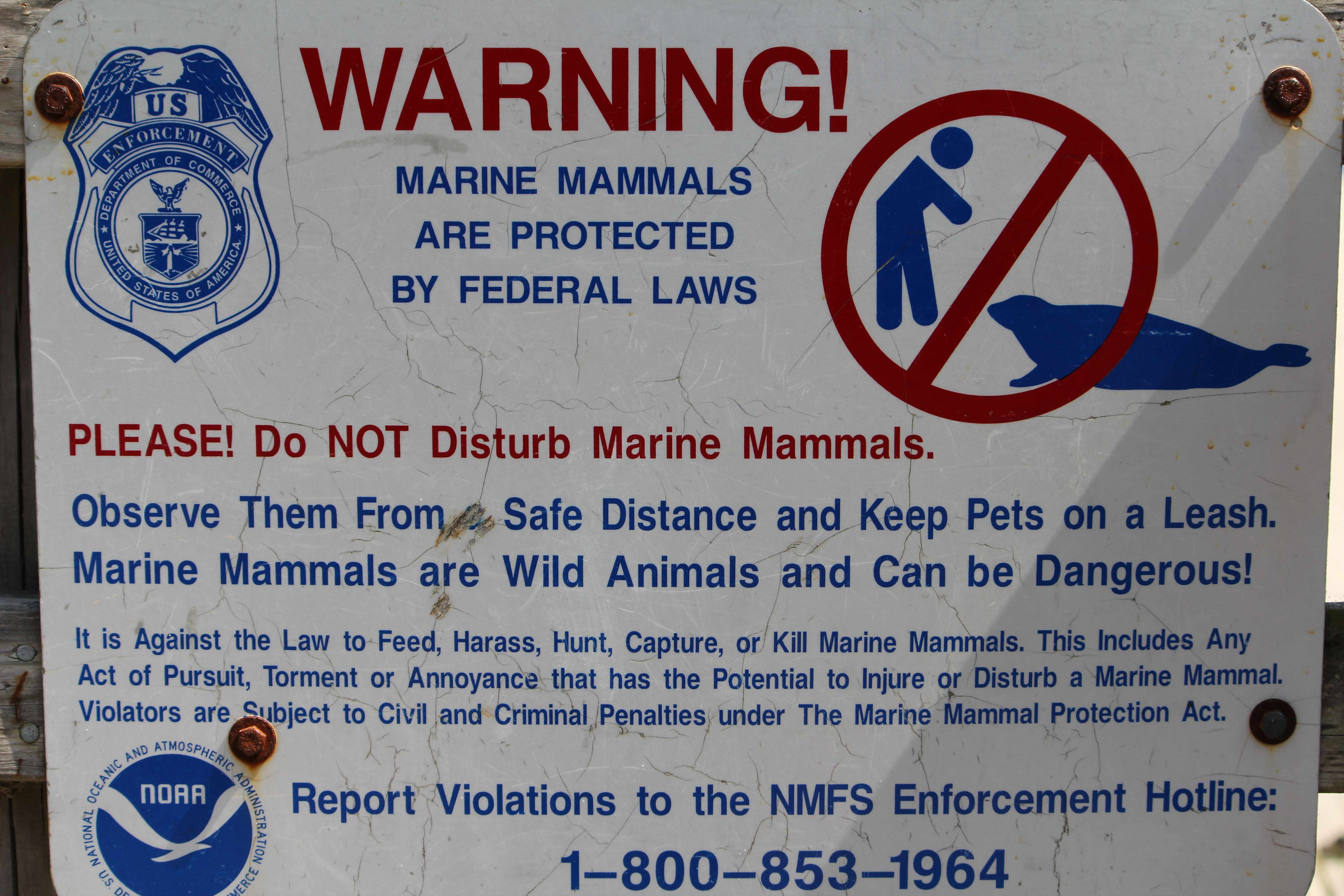My “senior week” before college graduation found me strapping my kayak onto the roof of my old station wagon and taking off to Maine. I decided to go it alone so that could get away from the suffocation of the city, sort a few things out, and do some solo paddling in a place where you can’t help but feel free. It was great paddling but after a few days I yearned for a paddling partner to share the experience with. It didn’t take long for Mother Nature to remind me that you’re never truly alone on the water; she had sent me a companion with flippers!
I met my first seal during a mid-day snack break in a quiet cove near Five Islands, ME. I was happily munching on a granola bar with my feet slung over the sides of my cockpit when he popped his head out of the water as if to say “hello.” I watched him playfully swim and periscope about 100 feet away as he watched me finish my snack. Then he disappeared underwater so I packed up my stuff and got on my way. As soon as I got out of the cove I heard some splashing off of my stern. It was the seal! He decided to come along and we’d end up paddling the next 3 miles together!
This experience with the “Five Islands” Seal left me with a great respect for these curious sea creatures. I had given the seal its space to behave naturally and in doing so he treated me to his company. I’ve had dozens of positive encounters paddling with seals over the years but a recent discussion with Alex got me thinking more about the topic. Alex has always been extremely cautious in his encounters with seals; so much so that he’ll avoid them if he can. His argument is that seals are wild animals that can be unpredictable and even aggressive at times. This is a valid argument indeed.
Clearly, our contrasting viewpoints warranted some clarification from a seal expert’s perspective. Therefore, we took a trip down to the Woods Hole Science Aquarium in Falmouth, MA to speak with a marine biologist and learn about what they would consider to be a reasonable set of seal watching guidelines for paddlers. Here’s what we learned:
Seals are protected by Federal Law
None of the seal species that are native to New England waters are considered endangered but they’re all protected under the Marine Mammals Protective Act. This federal law makes it illegal to touch, feed, hunt, kill or otherwise harass seals and many other marine mammals.
Under the law, harassment is defined as any act of pursuit, torment, or annoyance which has the potential to injure or disturb a marine mammal by interrupting/changing behavioral patterns such as migration, breathing, nursing, and feeding. As a kayaker, it’s your responsibility to respect a seal’s space during an encounter such that you don’t alter their natural behavior. Individual animals will react differently to your presence but you should consider yourself a disturbance if you notice any of these classic behavioral changes:
- Hurried entry into the water.
- Increased vocalization.
- Aggressive behavior.
If it seems that you’re a disturbance then the appropriate course of action is to cautiously leave the vicinity of the seal(s) and continue on your way.
Seal watching guidelines for kayakers
The following guidelines allow for kayakers to participate in respectful and safe encounters with seals:
- Stay at least 50 yards away from a resting seal and limit your viewing time to a maximum of 30 minutes. This allows them to get rest, stay healthy, and prevents habituation to humans.
- Avoid close approaches to seal haul outs and rookeries. This is where you’re most likely to disturb young seals and encounter aggressive behavior from protective adults.
- Never get in the water with seals or attempt to touch them. Seals are wild animals that can become aggressive if they feel threatened. Seal bites are known to transmit serious infections.
- Never attempt to feed seals. Food outside of their normal diet can be harmful to the seal as it impedes their ability to hunt and may draw them to boats and people in the future.
These general guidelines were adapted from information gathered during our visit to the Woods Hole Science Aquarium and from the Seal Watching Guidelines published by the National Marine Fisheries Service.
What to do if you encounter a seal in distress
If you happen to come across a seal that appears to be in distress (entangled, stranded, injured, sick, ect.) do not touch the seal or try to assist it on your own! The best thing to do is contact your local stranding network to report the location of the animal and the nature of its distress. They’ll send out a team that is trained in handling the seal and provide it with the help it needs. Here are some contacts for the New England Region:
- ME, NH, MA: New England Aquarium: 617-973-5247
- Cape Cod: Cape Cod Stranding Network: 508-743-9548
- RI, CT: Mystic Aquarium: 860-572-5955
Kayaking with seals can be a truly amazing experience. I’ll certainly never forget my afternoon with the curious and playful “Five Islands” seal! However, seals are wild animals and they deserve our respect and their space in the waters that we share. We hope this information helps to make your next seal encounter a respectful and safe experience.
Happy and Safe Paddling!
-Kayak Dave






3 Responses to Guidlines for Kayaking with Seals